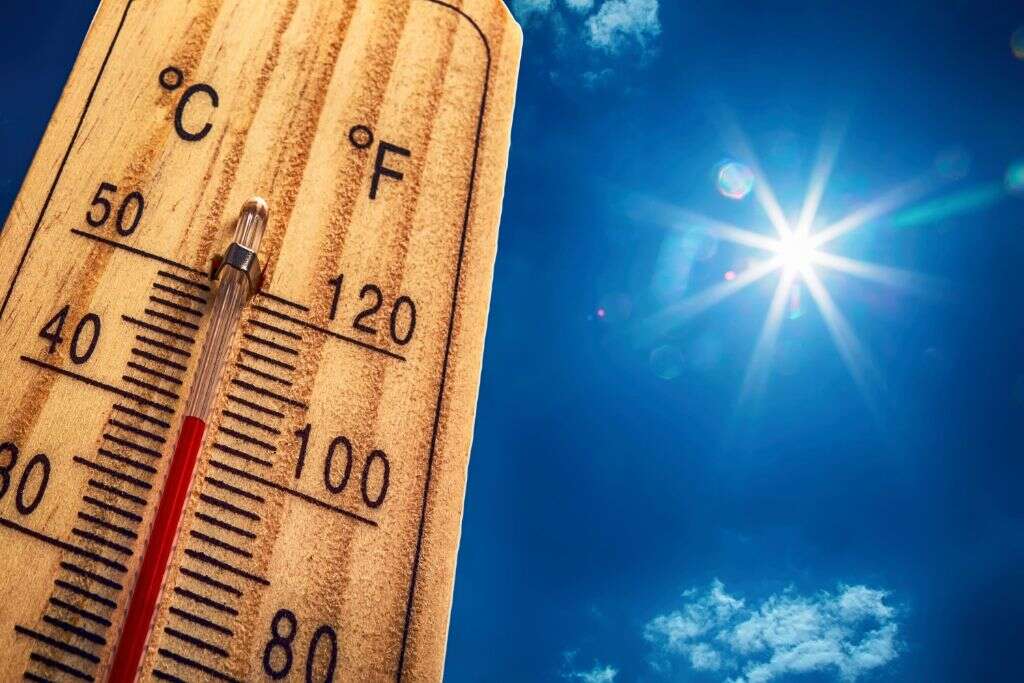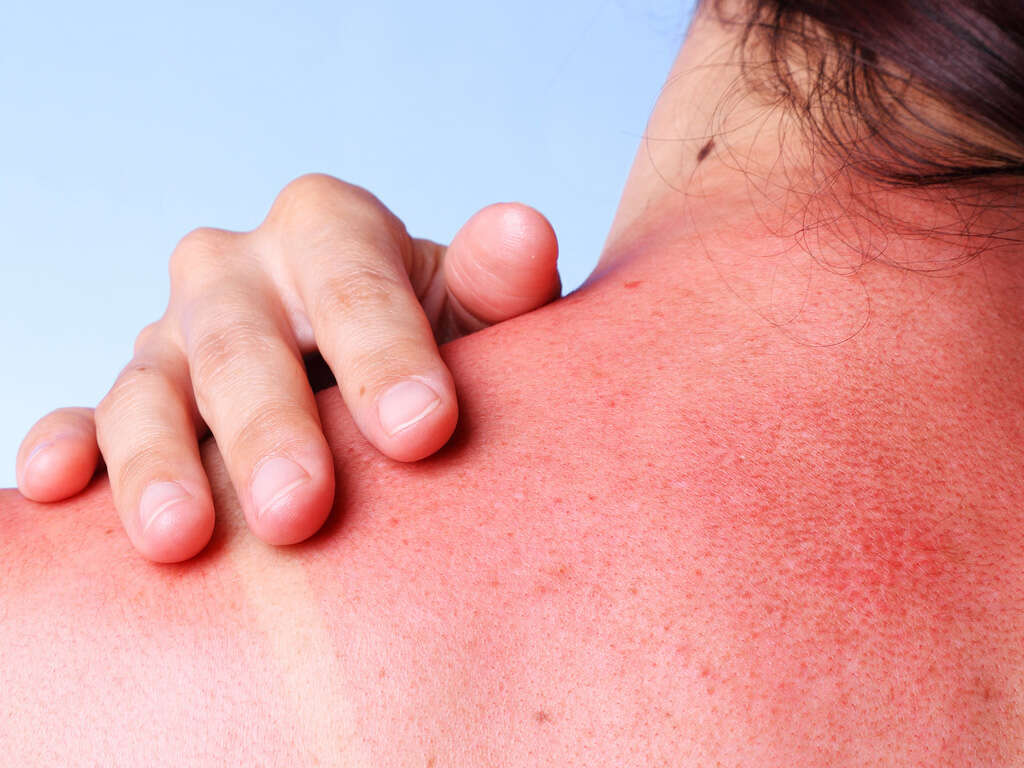Heat Stroke Symptoms
Heat stroke is a form of hyperthermia, not to be confused with hypothermia. While both conditions are a system failure to control the body’s internal temperature, hyperthermia has to do with an increase in temperature, 104 degrees Fahrenheit or more. Heat-related illnesses, such as heat stroke, do have similarities to hypothermia in that they are often accompanied by changes in the nervous system and involuntary physical symptoms. Unlike other heat-related illnesses, however, heat stroke is a medical emergency that requires immediate intervention.
Through normal bodily functions, you are typically able to dissipate excess heat through the radiation of heat through the skin. Unfortunately, on hot days or under extreme circumstances, your body cannot eliminate excess heat fast enough, which can result in a temperature in excess of 104 degrees Fahrenheit. When this happens, your body begins exhibiting potentially dangerous signs and symptoms. It is necessary to know those symptoms so you are prepared if you or someone around you experiences this condition.

1. Increased Body Temperature
The major sign of heat stroke is an increased body temperature. The average body temperature typically fluctuates between 97.7 and 99.5 degrees Fahrenheit. However, during hot, humid days, that temperature can steadily increase, especially if you are out in the sun for prolonged periods. Typically, people should get concerned about their temperature when it reaches between 99.5 and 100.9 degrees Fahrenheit, because that indicates a fever.
People who are suffering heat stroke can have a temperature of greater than 104 degrees Fahrenheit. Temperatures of that range are considered severe hyperthermia, and once the body reaches this temperature, it is critical for the patient to seek medical attention. Heat stroke is more severe than other heat-related illnesses; it is dangerous and can be deadly if left untreated, so beware and understand that your body has temperature limits.

2. Rapid Pulse
Heat-related illnesses are hard on the heart and the cardiovascular system. Heat in general creates a more strenuous and rigorous environment for the heart. As the engine of the body, it is the heart’s job to help cool the body in hotter temperatures. The heart must rapidly circulate the blood near the surface of the skin to allow it to cool before returning to the heart and being pushed back again.
Your heart will circulate your blood two to four times more per minute on a hot day than on a cold day. When you add physical exertion or exercise to this equation, it is easy to see how the heart can be overworked during the warmer months. If you are experiencing a rapid and strong pulse that is unrelenting, then it is a major sign that you might be suffering heat stroke.

3. Difficulty Breathing
When you exercise, your breathing can become labored or rapid because your body is trying to replenish oxygen to your muscles. This is normal. When you are suffering from heat stroke, your lungs can suffer acute inflammation, which can lead to rapid, short breaths; this is not normal and can be life-threatening if left untreated. The difficulty breathing that occurs because of heat stroke is similar to rapid breathing brought about by hyperventilating, but it will likely not resolve on its own.
If you must work outside on hot days, pay close attention to your breathing. Work slowly and intelligently. If you do not have to work in the direct sunlight, then don’t. If you can hold off doing extreme labor, then wait for a cooler day or time. It is best to do outdoor activities in the early morning or late afternoon when the sun isn’t directly overhead.

4. No Sweat
Sweat is a normal part of outdoor living in the summer months, and most of the time, it is healthy. However, the way you sweat can indicate whether you are symptomatic of a heat-related illness, such as heat exhaustion or heat stroke. If you are exerting yourself on a hot day and sweating profusely, especially if you cannot stop, then you are showing signs of heat exhaustion, especially if your skin is cold and clammy.
Sweating with heat stroke will manifest in two ways. With classic heat stroke, the person will not be exerting themselves, they will experience a high body temperature, and they will not sweat. Alternatively, exertional heat stroke will come on with strenuous activity, high body temperature, and excessive sweating after the exertion has stopped. If you find that you are presenting with these symptoms, then it is necessary for you to move to a cool space and call for help.

5. Strange Behavior
Confusion, slurring speech and difficulty putting thoughts together are all behaviors related to heat stroke. As your body struggles to regulate your temperature, it uses an excessive amount of water and minerals. If you are not properly hydrating and eating, then your brain is being deprived of adequate nutrients and blood flow, which inhibits your ability to think and act clearly.
Water consumption is pivotal to maintaining an appropriate blood supply in your body. On hot days, your body naturally requires more water to maintain that supply. If you neglect your responsibility to your body, then you risk a loss in blood pressure and surplus, which leads to an inadequate amount of blood being pushed through your body, depriving vital organs like your brain.

6. Hallucinations
Hallucinations are realistic imagined sensations. They can be auditory or visual, and while these events are not based in reality, to the person experiencing them hallucinations can seem to be real. While this condition is most often associated with mental disorders such as schizophrenia, it also can appear in people suffering from a traumatic event or illness.
Hallucinations can be brought about by high fevers, brain trauma or organ damage. As those suffering from heat stroke likely experience all or some of those symptoms, it is not uncommon to hear that heat stroke survivors have experienced hallucinations. It is necessary to point out that not all hallucinations are intense visuals or voices; many cases involve body sensations, often described as crawling feelings on the skin, or odors.

7. Agitation
Another sign of heat stroke is agitation. The medical definition is not synonymous with frustration. Instead, agitation refers to tension, irritability and anxiety. It can also reference antsy behavior and trouble focusing. While it can be difficult to notice this behavior in yourself, it is necessary to watch for it in others who may be at risk of a heat-related illness like heat stroke.
When working with others outside or in a hot environment, pay attention to signs and symptoms of agitation. For example, you may see someone randomly having angry outbursts or acting in a disruptive and impulsive way. Also, you may notice that someone is talking or moving excessively, wringing their hands and pacing or shuffling their feet. If this behavior is out of the ordinary, the individual might be experiencing heat-induced agitation.

8. Disorientation
While similar to agitation and confusion, disorientation is a somewhat different condition. Disorientation is a more severe form of confusion, and it can result in serious absentmindedness. For example, people suffering from this symptom may not be able to state their location, the date, the time or even their name. It is scary for spectators as well as the patients, who are often aware that something is not right.
Disorientation in heat stroke victims can result in delirium, delusions and wandering. If you are experiencing this condition, you will find it challenging to remember basic things, you may experience disrupted attention, and you will likely feel restless. Although you might know something is off, because of your condition you may not be able to articulate it, which is why it is important to be around people who know you when you are working in high-risk environments.

9. Seizure
Heat stroke, when left untreated, can result in a seizure. A seizure is caused by electrical disturbances in the brain that lead to sudden, rapid movement. In some cases, it can result in the loss of consciousness. Most likely, the cause of a seizure during heat stroke is fever-related, but it can also be the result of some other underlying condition.
Your body is not meant to reach temperatures above 104 degrees Fahrenheit. These temperatures are dangerous, and when they are coupled with reduced blood flow to the brain and decreased lung function, it is not out of the realm of possibility for you to experience a seizure. This is another reason why quick intervention is necessary during heat stroke.

10. Coma
One of the most dangerous symptoms of heat stroke is a coma. A coma is a state in which patients cannot be awakened and they are unresponsive to stimuli. While comas are not common in heat stroke patients, they do occur, which again points to the need for rapid intervention.
Heat stroke or hypothermia is the most dangerous of the heat-related illnesses. Unlike heat exhaustion, where merely moving to a cooler, climate-controlled environment is likely all the treatment is needed, heat stroke requires medical intervention to cool the body rapidly. If you or someone you know is experiencing any of the symptoms of heat stroke, do not hesitate to seek medical assistance.










